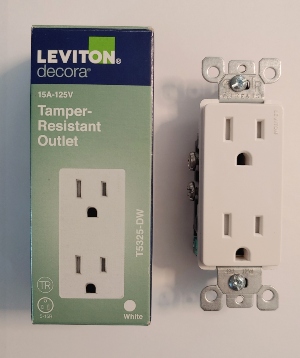5 Extension Cord Safety Tips
Whether it's extending the reach of appliances and power tools or working as temporary multi-outlets when there are not enough sockets available, extension cords help homeowners and contractors deliver power where it is needed.
However, despite their convenience, extension cords aren't simply a plug-and-go tool as many people seem to believe. In fact, improper use will damage them and could create fire hazards in your home.
According to the Consumer Product Safety Commission, more than 4,600 residential home fires are caused by faulty extension cords every year. Understanding how to properly use them may save you time, money, and even your life.
So, how to safely use extension cords in your home?
1- Understand the difference between indoor and outdoor use
The wiring industry produces extension cords for every type of use - residential, outdoors, industrial, etc. These cords meet industry standards and are extremely safe when used properly. So, as long as you don't mix them together, you should be fine.
Outdoor extension cords come with plastic, rubber, or vinyl hardcovers. Their design insulates them from moisture, UV rays, temperature changes, and abrasion when used outdoors, but they are still vulnerable to snow, water, and curious pets.
Indoor extension cords lack most of these protections, so they should never be used outdoors. When used inside, never run them through walls, doorways, ceilings, floors, or any other area or surface which can cover them. This will stop heat from escaping, which could create a fire hazard that you wouldn’t be aware of until it's too late.
2- Be careful with what you plug
Most people don't think twice before using extension cords to power any appliance. This is not a good practice because it could potentially damage both your cord and the appliances connected to it.
You can prevent this by not plugging extension cords in sequence (one into another), limiting the number of appliances connected to a cord, and by never trying to use three-prong plugs into two-slot receptacles.
Heaters, fans, and any other device with an engine will need extension cords that can handle big electrical loads. So, if you have a high-power electrical appliance in your home, make sure you get something more powerful than a basic 16-gauge extension cord.
 Finally, make sure you use plastic outlet caps to baby-proof any unused cord receptacles. New building codes have been updated to require Tamper-Resistant Receptacles (TR) [Buy on Amazon]. TR receptacles have built-in shutters that prevent children from inserting foreign objects in the receptacle slots. So, make sure to review the code and be up to code when implementing new outlets.
Finally, make sure you use plastic outlet caps to baby-proof any unused cord receptacles. New building codes have been updated to require Tamper-Resistant Receptacles (TR) [Buy on Amazon]. TR receptacles have built-in shutters that prevent children from inserting foreign objects in the receptacle slots. So, make sure to review the code and be up to code when implementing new outlets.
3- Store them in a safe location
Extension cords should be unplugged and stored indoors when they're not being used. This will extend their lifespan by limiting their exposure to natural elements and your chances of tripping them.
There are many ways to coil extension cords, but the best two are the over-under coil and chain-link methods.
The over-under involves switching the direction you're rolling with every loop. This creates a coil that follows the cord's natural curve and can rest stress-free.
The chain-link method is the second-best choice. It's more complicated than the over-under but leaves the cord ready to be used.
Regardless of which method you pick, make sure you inspect your cords for loose wires, burnt sockets, and other types of damage before and after using them.
4- Buy the cord that best suits your electrical needs
Taking your time to determine your electrical needs will save you time and money in the long run.
Stay away from knockoffs and always buy cords that have been approved by the American National Standards Institute (ANSI) or an established testing laboratory like the Underwriters Laboratory (UL).
You should look to buy extension cords that are polarized or have three-prong plugs. These offer an extra layer of protection from electric shock by ensuring that the devices connected to them are only powered when their switches are on.
Finally, you should get a cord whose size and length meet your needs. The rule of thumb is that longer cords can't handle as much power as shorter ones, while thick, low-gauge cords are better suited for larger applications.
5- Don't overload your extension cords
An extension cord can be overstressed if too many devices are connected to it. But even if only a single device is connected to it, it's important that it doesn't exceed the cord's wattage rating.
The wattage rating is simply the amount of electricity that a cord can transmit without overheating. A cord's wattage rating can be expressed in watts, amps, or volts and should always be greater than that of the appliance connected to it.
When using multiple devices in a single cord, it is important that their combined wattage rate is smaller than that of the cord.
Following these tips will keep you and your loved ones safe from electric shocks and fire. However, the most important thing you should remember is that extension cords should only be used as a temporary measure.
If you find yourself using extension cords too frequently at home, you might want to talk to your trusted contractor to see how you can update your house’s electrical system.